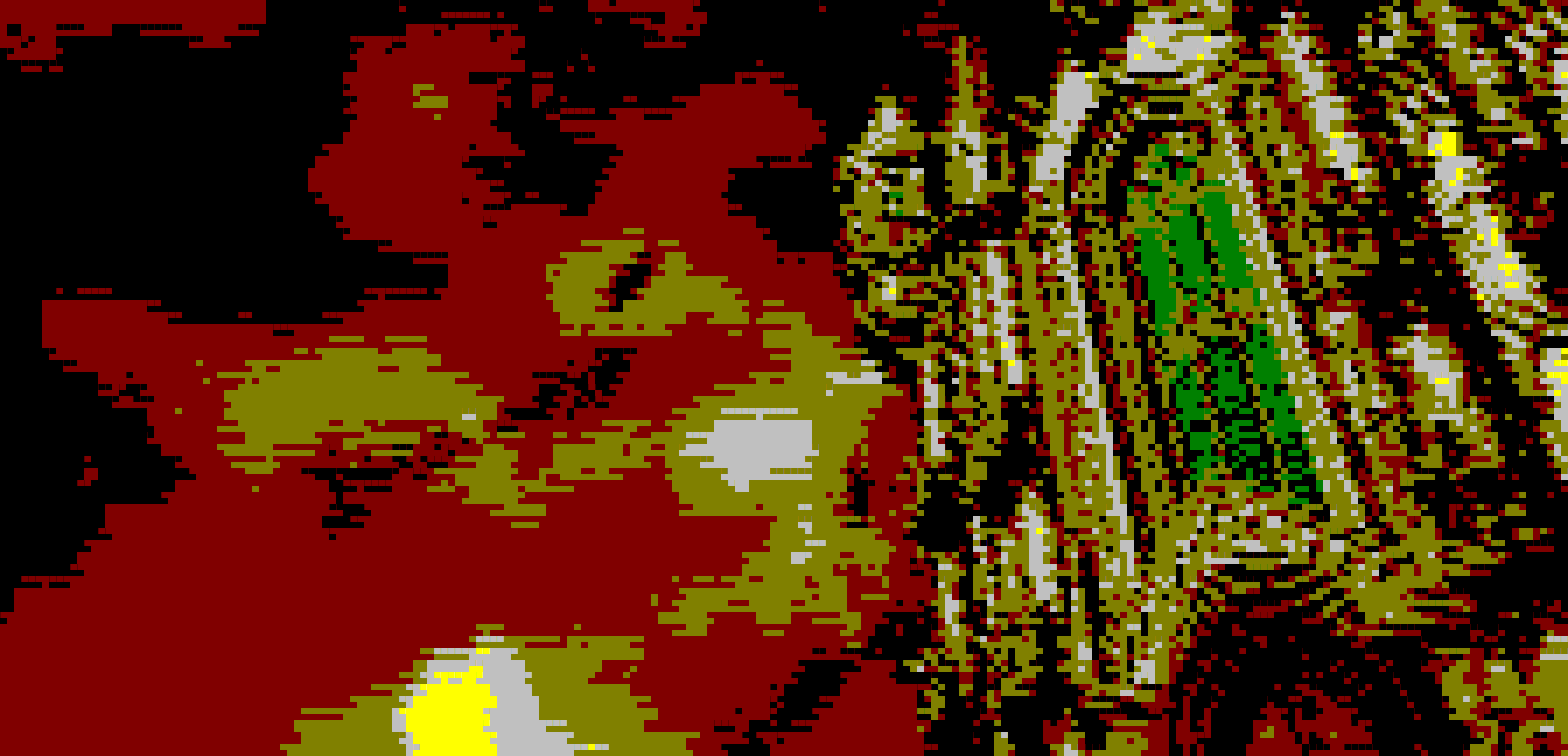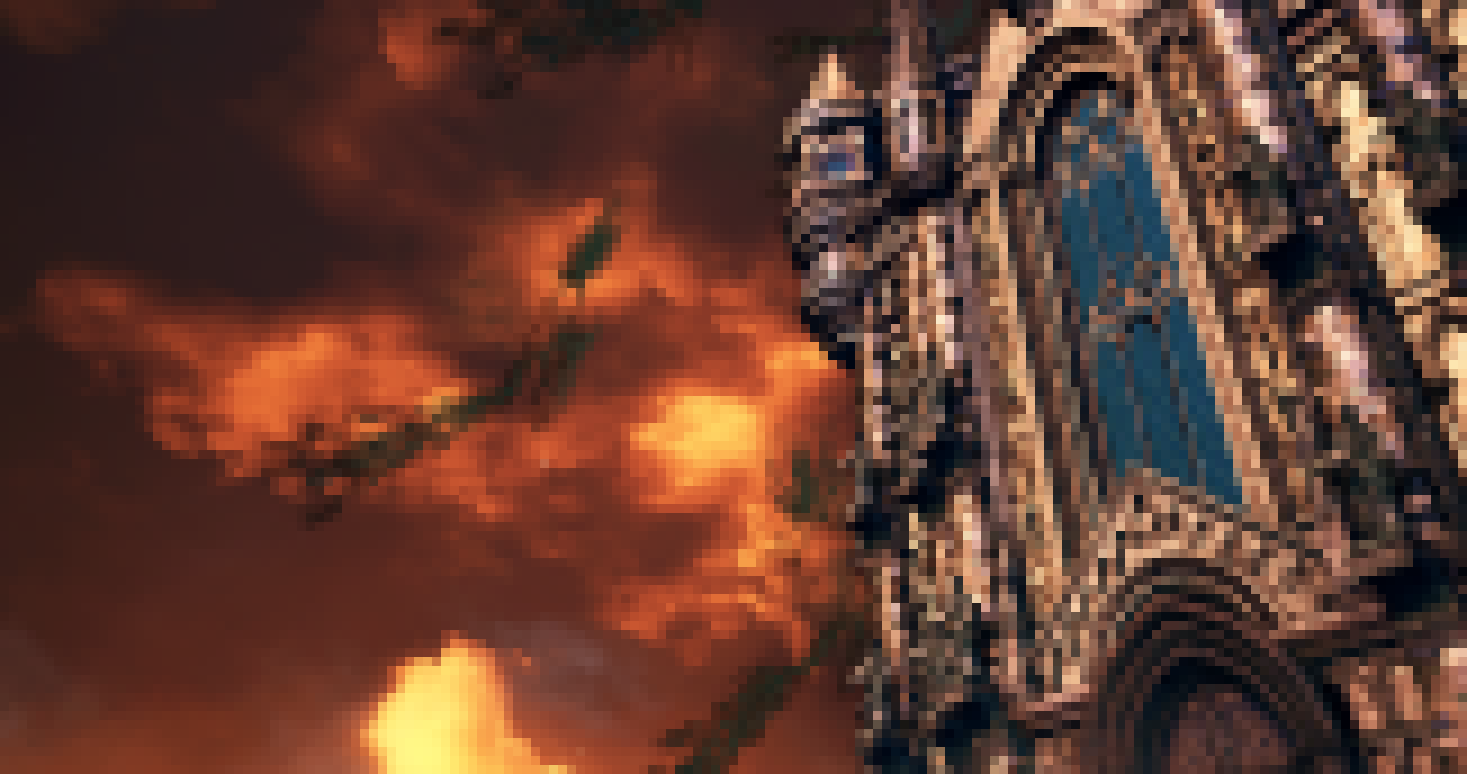Expand description
Display images in your terminal, kind of




Special thanks
To all who support further development on Patreon, in particular: //!
- ThePhD
Library doc
This library is used by termimage itself for all its function and is therefore contains all necessary functions.
Data flow
Options::parse()
|> guess_format()
|> load_image()
|> image_resized_size()
|> resize_image()
|> write_[no_]ansi[_truecolor]()
Prose explanation
First, get an Options instance, be it via a struct-literal or Options::parse();
or don’t and just create the individual arguments manually.
Then, use ops::load_image(). If you know your image’s format, great. If you don’t, get it via ops::guess_format().
After that resize the image to an output-ready size provided by ops::image_resized_size() with resize_image().
ops::image_resized_size() takes into consideration using two pixels per cell in the output functions,
so the size it returns is twice as tall as the terminal output size passed to it.
Finally, call ops::write_ansi()/ops::write_ansi_truecolor()/ops::write_no_ansi() depending on your liking with the
resulting image.
Or, if you want to display images manually, use ops::create_colourtable() to create an approximate colours table and
display it, for example, with ncurses.
Example
This is a complete example, from parsing the commandline to displaying the result.
let opts = Options::parse();
let format = ops::guess_format(&opts.image)?;
let img = ops::load_image(&opts.image, format)?;
let img_s = ops::image_resized_size(img.dimensions(), opts.size, opts.preserve_aspect);
let resized = ops::resize_image(&img, img_s);
match opts.ansi_out {
Some(AnsiOutputFormat::Truecolor) => ops::write_ansi_truecolor(&mut stdout(), &resized),
Some(AnsiOutputFormat::SimpleWhite) =>
ops::write_ansi(&mut stdout(), &resized, &util::ANSI_COLOURS_WHITE_BG),
Some(AnsiOutputFormat::SimpleBlack) =>
ops::write_ansi(&mut stdout(), &resized, &util::ANSI_COLOURS_BLACK_BG),
None => ops::write_no_ansi(&resized),
}Executable manpage
Exit values and possible errors:
1 - failed to guess the file's format
2 - failed to open the image file
SYNOPSIS
termimage [OPTIONS] <IMAGE>
DESCRIPTION
Show images in your terminal.
The images are automatically downscaled to the terminal’s size and their colours are approximated to match the terminal’s display colours.
With ANSI output this means a 3-bit colour resolution, with WinAPI - 4-bit.
With WinAPI output the output colours are acquired from the console itself, with ANSI output a sane default is assumed.
OPTIONS
<IMAGE>
Image to display, must end in a recognisable image format extension.
-s –size <size>
Output image resolution.
By default this is autodetected to match the output terminal's resolution,
but is required when outputting to a file.
Format: NxM
-a –ansi <ANSI_type>
Force ANSI output of the specified kind,
The accepted values are "truecolor", "simple-black", and "simple-white",
truecolor is the default on non-Windows.
Simple ANSI output uses 3-bit background colours for the specified background,
while truecolor supports the whole 24-bit pallette.
-f –force
By default the image's aspect ratio will be preserved when downscaling,
use this option to override that behaviour.
EXAMPLES
termimage [-s NxM] [-f] assets/image.png
Display assets/image.png in the terminal using the default output type,
optionally not preserving the aspect ratio.
termimage [-s NxM] [-f] [-a simple] assets/image.png
Display assets/image.png in the terminal using the simple ANSI output type,
optionally not preserving the aspect ratio.
(for f in $(find image_dir -type f); do termimage -s NxM [-f] [-a ANSI_type] $f; done) > out_file
Print all images in image_dir to out_file.
Note the --size option being specified, since it's required when outputting to a file.
Modules
- Migration guides.
- Main functions doing actual work.
- Module containing various utility functions.
Structs
- Representation of the application’s all configurable values.
Enums
- Supported ANSI output formats
- Enum representing all possible values the application can fail.